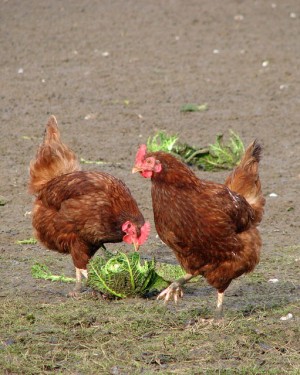“Cut the chicken into pieces, and heat up a wok and stir-fry them until they’re no longer raw. Add wine to the chicken and boil twenty to thirty times, then add autumn sauce and boil another twenty to thirty times, than add water to the chicken and again bring it a boil. Chop the napa cabbage into pieces. When the chicken is seventy percent done, add the chopped cabbage and boil it until the remaining thirty percent for the chicken is cooked to doneness. Add sugar and green onion to season. The cabbage must be boiled to doneness before the dish can be served. For each chicken use four liang of oil.”
黃芽菜炒雞
將雞切塊,起油鍋生炒透,酒滾二三十次,加秋油後滾二三十次,下水滾,將菜切塊,俟雞有七分熟,將菜下鍋;再滾三分,加糖、蔥各料。其菜要另滾熟才用。每一隻用油四兩。

Just a few translation notes:
- The phrase “boil twenty to thirty times” (滾二三十次) may or may not be that same as “twenty to thirty boils” (二三十滾) in their length of time. In a previous chapter I translated a “boil” as “a moment” and pegged it at around 3 seconds. If this is correct then this would amount to sixty to ninety seconds. If not, then it’s anyone’s guess.
- 黃芽菜 (huang ya cai) literally translates to “yellow sprout vegetable”, though it’s actually just napa cabbage. It is called such because the leaves in the tender heart of vegetable is bright yellow in colour.
- For “用油四兩” in the last sentence, I’m assuming Yuan Mei is talking about the oil used in stir-frying the chicken and not the autumn sauce (literally “autumn oil”) added during boiling.